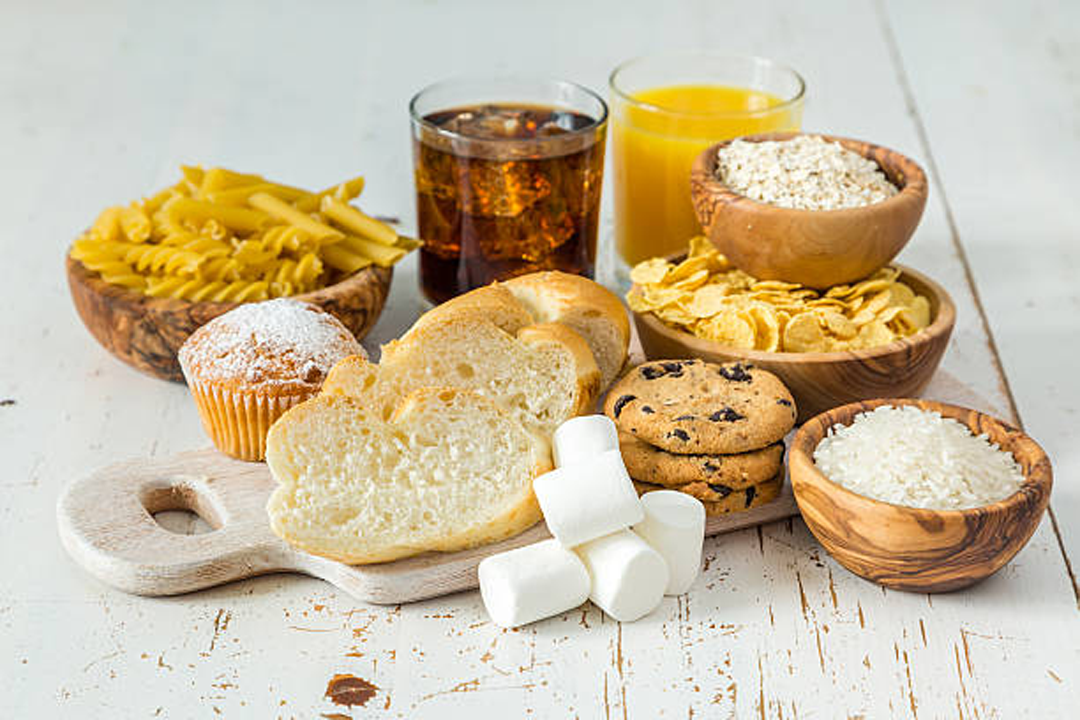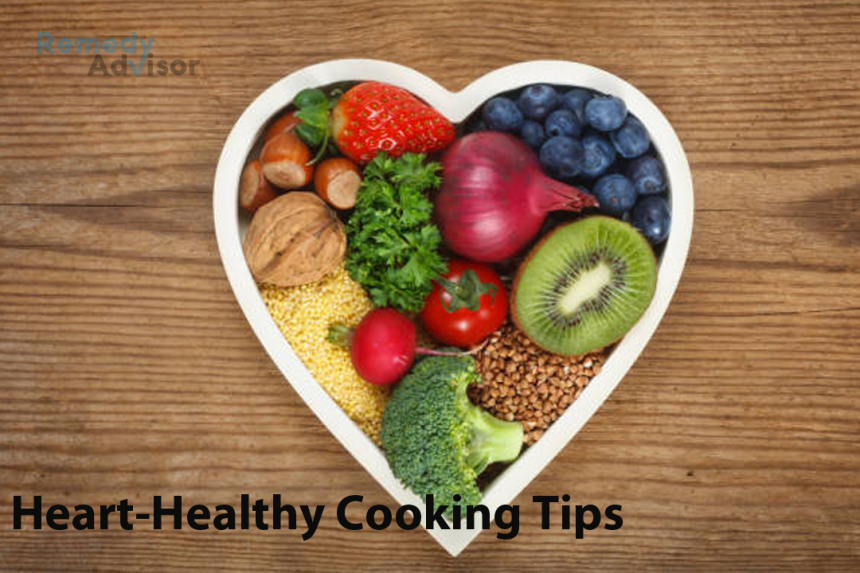Heart disease used to be something that just “happened” to you. You could blame it on genes, getting older or just about any other handy excuse, but there wasn’t a whole lot you could do about it. These days we know better. We know that smoking, inactivity and, especially, poor food choices may multiply our risk many times over.
In 1961, the American Heart Association (AHA) delivered its first dietary guidelines to an overweight public, and the organization has since encouraged Americans to cut back on cholesterol, salt, saturated fats, total fats and excess calories and to fill up on the goodness of whole grains, vegetables, fruits, low-fat dairy products, lean meats, fish and poultry.
The heart facts
Here, AHA experts guide you through the essentials of a heart healthy diet.
Cut back on fat
Total fats should account for less than 30 percent of all your calories, experts now say.
This figure represents a decrease from previous recommendations of 30 to 35 percent. Since the average American still gets about 40 percent of his daily calories from fat, 10 percent of the calories you would normally eat as fat (200 to 270 calories) should probably be either cut out or replaced by other sources, such as carbohydrates.
Limit above all saturated fats
Not all fats are created equal. Saturated fats are the most likely to lead to heart problems; they should make up no more than 10 percent of your total calories. For most people, this means cutting their saturated fat intake in half. A man eating 2,700 calories a day, for example, should keep his saturated fat intake to 30 grams, the equivalent of about 2 tablespoons of pure saturated fat. For a woman eating 2,000 calories a day, that’s 22 grams of fat or about 1% tablespoons.
You can probably meet this requirement by cutting back on fatty red meat, butter, dairy fats and highly saturated vegetable fats like coconut and palm oil, found in processed foods such as nondairy creamers, and baked goods.
Of the remaining 20 percent of fat calories, less than half should come from polyunsaturates (like safflower oil and corn oil) and the remainder should come from monounsaturates (like olive oil).
Save the eggs for Easter
Cholesterol intake should be less than 100 milligrams per 1,000 calories, not to exceed a total of 300 milligrams per day. Most people get that much cholesterol now in the meat, dairy and baked products they eat. Since even one egg has almost 300 milligrams of cholesterol, eggs are obviously something to limit to about two whole eggs per week.
Note that cholesterol and saturated fat is not the same thing. Although these two substances very often occur in the same foods, this is not a/ways the case. Some foods that are high in cholesterol are low in saturated fat, and vice versa.
A classic example is shellfish. Lobster, scallops and oysters have been blacklisted by doctors for years because they contain about twice as much cholesterol as red meat or poultry. But they also contain virtually no saturated fat. If you take doth cholesterol and saturated fat into consideration, shellfish are a better dietary choice than even the leanest red meats.
Don’t be concerned about protein
“High in protein!” many food commercials boast. In fact, protein intake should be approximately 15 percent of calories and, for the average American, this figure is just about right. Unless you’re a professional bodybuilder or are under doctor’s orders to up the protein, there’s little reason for concern.
Crank up the carbohydrates

Carbohydrates should make up 50 percent or more of calories, with emphasis on increasing intake of complex carbohydrates like whole grains, beans, vegetables and fruit. Right now most Americans get about 40 percent of their calories from carbohydrates, and about one-third of that is from sugar.
Sprinkle no salt
Sodium intake should be reduced to approximately 1 gram per 1,000 calories, not to exceed 3 grams per day (that’s 1% level teaspoons of salt). This is far less than the 6 to 8 grams a day the average American consumes. Not using salt in cooking or at the table and avoiding high-salt foods can help you cut sodium intake back to 2 grams.
Cut the booze
Alcoholic beverages should be limited to no more than two beers or two glasses of wine a day. People who have more than three drinks a day experience a significant increase in blood pressure. Even moderate drinking can pile on the calories.
Eat a varied diet
A wide variety of foods should be eaten. The more varied your diet, the better your assurance that you get all the vitamins, minerals and other essential nutrients you need. Keeping your food selections varied and interesting also helps you to stick with your new health promoting diet. Also, restricting total calories to what you need to maintain your ideal body weight should be part of your eating program.
How to be a smart shopper
Now that we’ve covered the basics, take a stroll down the cool, fluorescent lit, linoleum aisles of a typical supermarket with dietitian, author and American Heart Association volunteer Leni Reed Riley of Dallas. Be forewarned, though: If you usually fill your squeaky metal cart with Fritos, Dr. Pepper and Slim Jims, your shopping habits are going to have to change.
Riley conducts her Supermarket Savvy Tour in a well-stocked grocery store. Her tour is an aisle-by-aisle course in reading labels, interpreting advertising claims and learning which foods contain reasonably low amounts of fat, salt, cholesterol and calories.
Riley, president of a supermarket consulting firm, emphasizes that “there are ways to cut corners and time and still eat very nutritiously.” Here’s how it’s done.
Pick a peck of pita
Choose among these bread products: For little to no fat, pick pita bread (preferably whole grain), rice cakes or un-fried corn tortillas. For low fat, buy whole grain or partially whole grain breads, sandwich buns or English muffins. Other low-fat breads include Italian, French and water bagels (not egg bagels).
Flip away fat
For low-fat pancakes and waffles, choose whole wheat or partially whole wheat mixes. Then, according to directions, add polyunsaturated oil and substitute two egg whites for each whole egg. Cook on a nonstick skillet or waffle iron, greased with just a little bit of acceptable oil, such as olive or corn.
Plan a healthy morning
Choose cooked cereals that you can make without salt (grits, mixed grain, oatmeal, rice and wheat) or cold cereals such as puffed rice, puffed wheat or shredded wheat. Avoid instant cereals, because they generally contain sodium.
Note that granola cereals often have at least twice as many calories as most other cereals. Avoid those granolas made with coconut oil, palm oil or vegetable shortening the catchall term for vegetable oils, be they polyunsaturated like soybean and corn or saturated like coconut and palm.
Make soup simple

Make a can of low-sodium broth (beef or chicken) into a quick, healthy meal by adding fresh or frozen vegetables, cooked chicken chunks or diced tofu, fresh or dried herbs and a little sherry, freshly grated ginger and/or hot pepper sauce.
Dilution is the solution
Delicatessen items, usually high in fat and salt, can still be adapted to a healthy menu. With chicken or tuna salad, for instance, add more vegetables and pasta or rice to dilute the mayonnaise.
How low can you go?
When you see labels that say “lower” or “reduced” fat, salt or sugar, “you should ask ‘lower than or reduced from what?” ” Riley says. A package of chicken franks, for instance, says “lower fat,” but the label shows that 72 of the 90 calories in one frank are from fat. “Since that’s lower fat, you can imagine what regular is like. Sliced boneless breast of turkey or lean ham would be a much better choice.
“You can rinse much of the salt and sodium nitrite off the ham with cold water,” she says. Be sure to use the ham immediately, however, because the salt and sodium nitrite act as preservatives.
Let’s be frank
Don’t assume that all-beef hot dogs are made from lean beef. All-beef hot dogs actually contain just as much fat as regular hot dogs.
You needn’t desert dessert
Most frozen yogurt desserts are much lower in fat than frozen tofu desserts, which may contain corn, palm or coconut oil. But don’t expect frozen yogurt to be much lower in calories than most ice creams. What they lack in fat, they make up in sugar. The new fruit sorbets are a delicious, low-calorie alternative to ice cream.
Check the jar
Look for no-salt or lightly salted peanut butters without hydrogenated oils added to them.
Pick up some of these spicer uppers
Your supermarket stocks little items that can easily substitute for the butter, oil, sugar and salt that we typically add to our diets for a little extra taste.
Try these.
Hot spices
Tex-Mex and Cajun cooking adapt well to low-fat, low salt methods because the strong spicy flavors need no help.
Mustard
Brush on broiled fish or chicken. Add a little paprika, red pepper or parsley.
Pineapple, mandarin oranges or other fruits
Use in chicken dishes. ‘Try orange juice concentrate on broiled fish or chicken. Instead of piling on the mayo, add mango, papaya, a few pine nuts and a little honey to chicken salad. A fruit salad dressing of pureed bananas, poppy seed, yogurt and orange juice consists of only 30 calories a tablespoon.
Extracts
Known by names like almond, vanilla, coconut and rum, these may increase the taste of that pie, cake or pudding while you cut back on sugar salt and fat.
Cinnamon and fruit butters
On hot cereals they make a sensible alternative to butter and milk.
You can still have an occasional bag of Fritos, and maybe even a Slim Jim from time to time, but for a healthy heart, fill your cart with the nutritional products you’ll only find off the junk food aisle.







